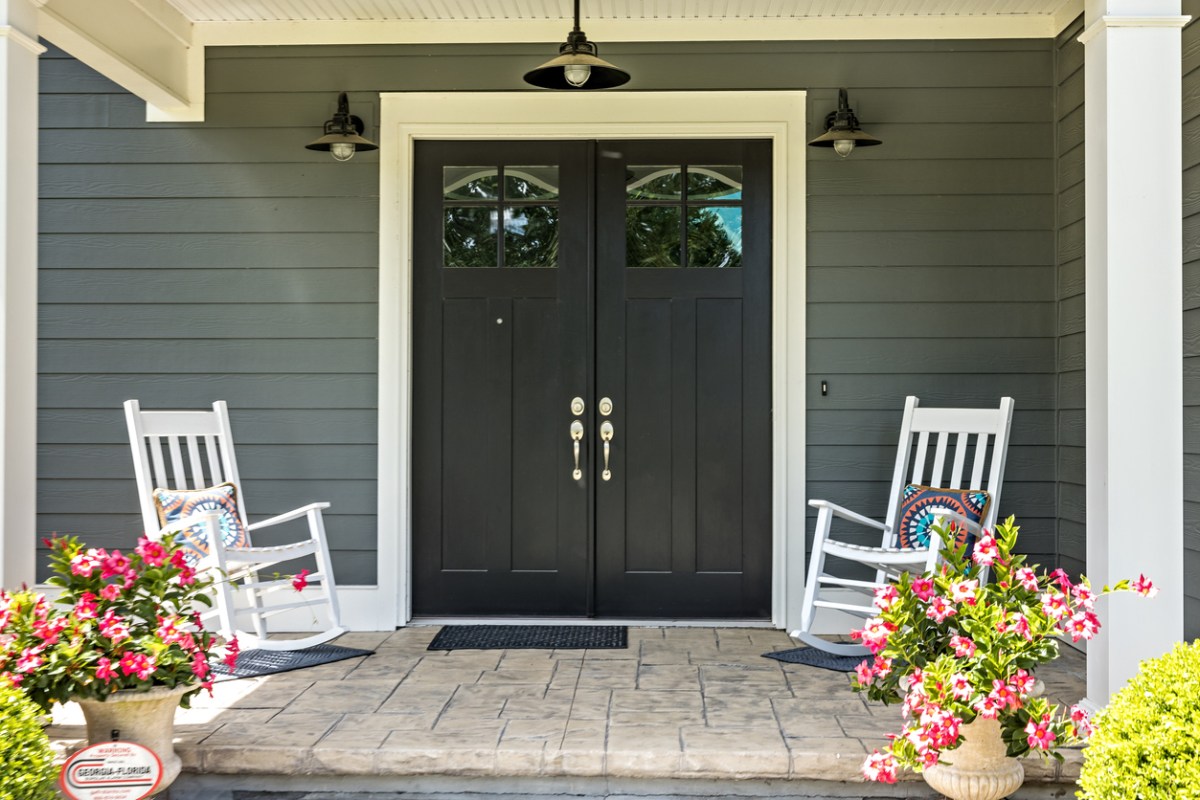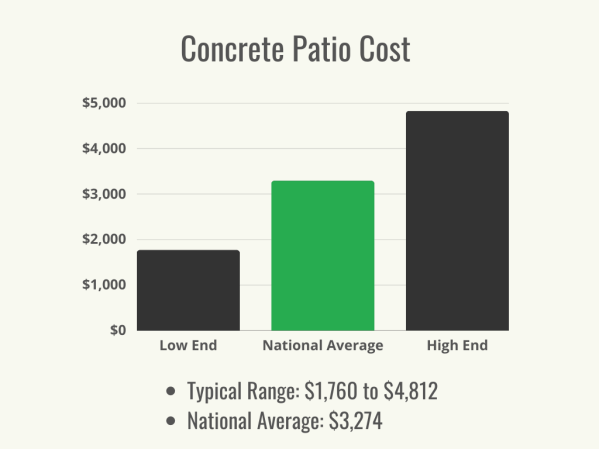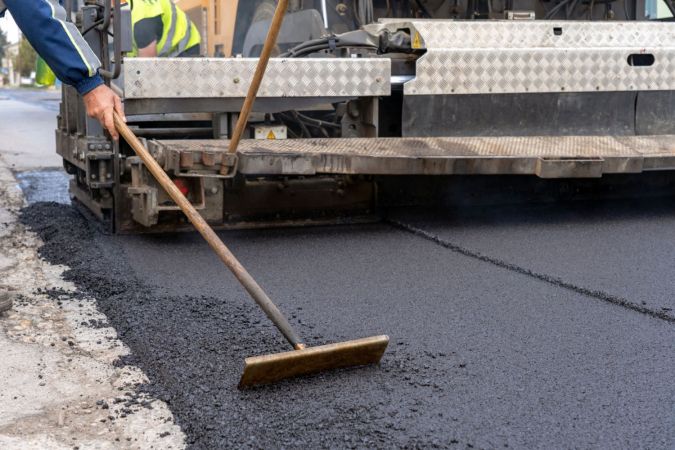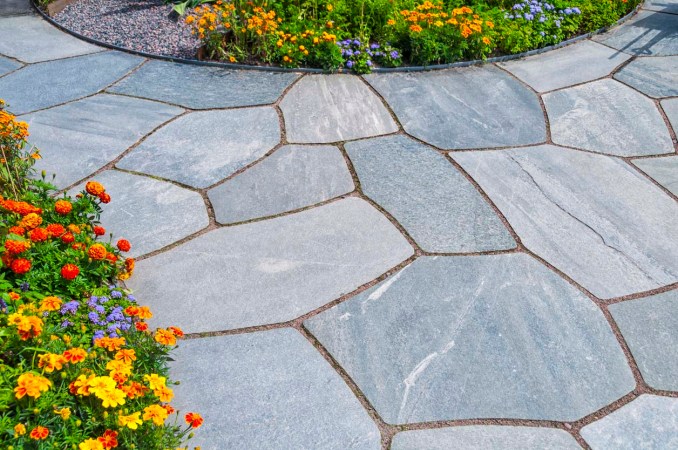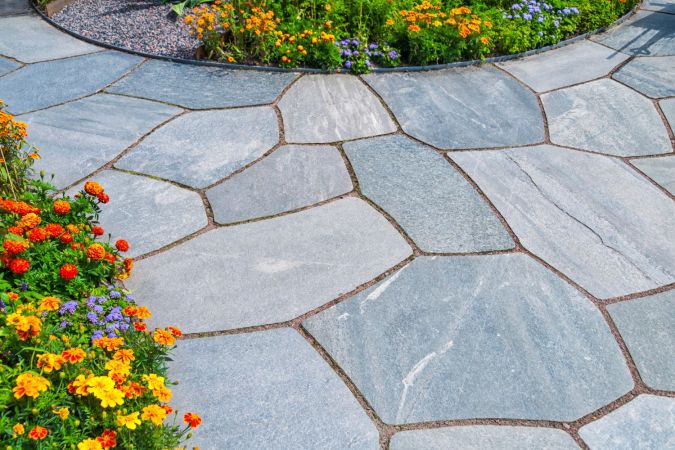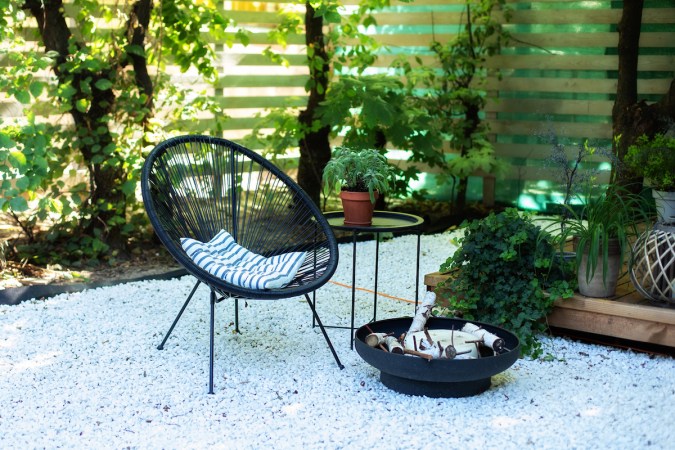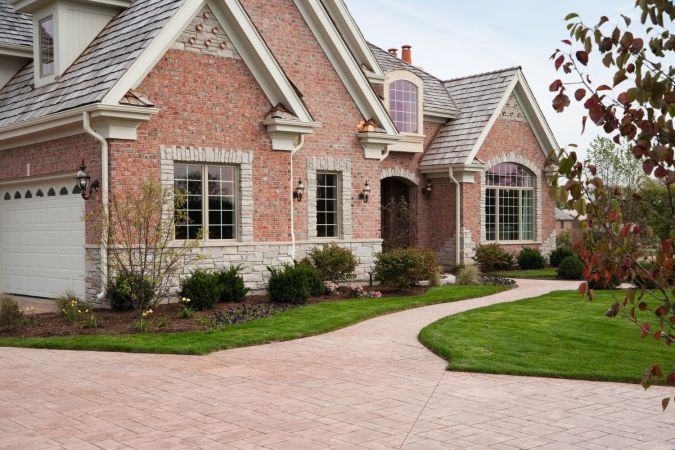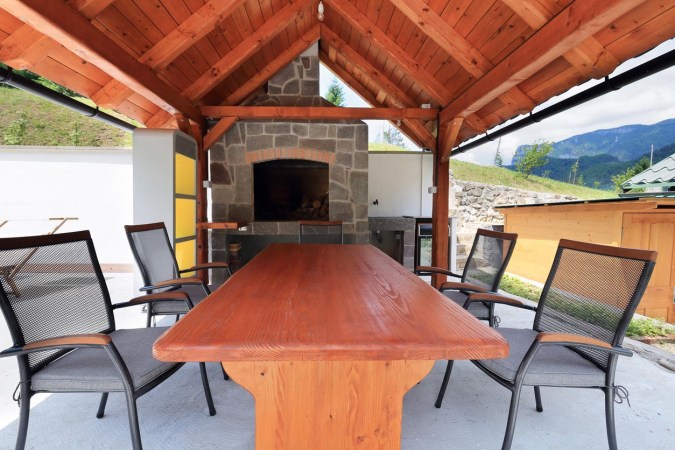We may earn revenue from the products available on this page and participate in affiliate programs. Learn More ›
Q: I want to upgrade my old patio, and a friend suggested getting a stamped concrete patio installed as a budget-friendly option. I’ve never heard of this material. What is stamped concrete, and is it a good choice for a patio?
A: The short answer is that stamped concrete is textured, patterned, or colored to look similar to more expensive materials that are used for outdoor surfaces. Concrete stamping can offer an affordable solution for homeowners who are looking to replace a patio, driveway, walkway, or other exterior surface while adding visual appeal to their property that standard concrete or asphalt wouldn’t be able to match.
RELATED: Cement vs. Concrete: A Case of Mistaken Identities
Stamped concrete is concrete that has been textured and/or colored to look like other materials.
As its name suggests, stamped concrete is a type of concrete. After the concrete is poured, heavy mats and stamps are placed over it to give it a patterned appearance. Because of the wide array of concrete stamping patterns available, the material can mimic the look of higher end materials often used when laying an outdoor surface.
For example, the mats used to texture a stamped concrete walkway or driveway could allow it to look as if it was really made from:
- Cobblestone
- Brick pavers
- Wooden planks
- Slate
- Live edge wood
- Flagstone
- Tile
In addition to matching the pattern of these different stones, stamped concrete can also be colored to provide an even closer look. There are many stamped concrete colors available; some of the color additives are designed to be added to wet concrete before it is poured, while others are used as a topical color.
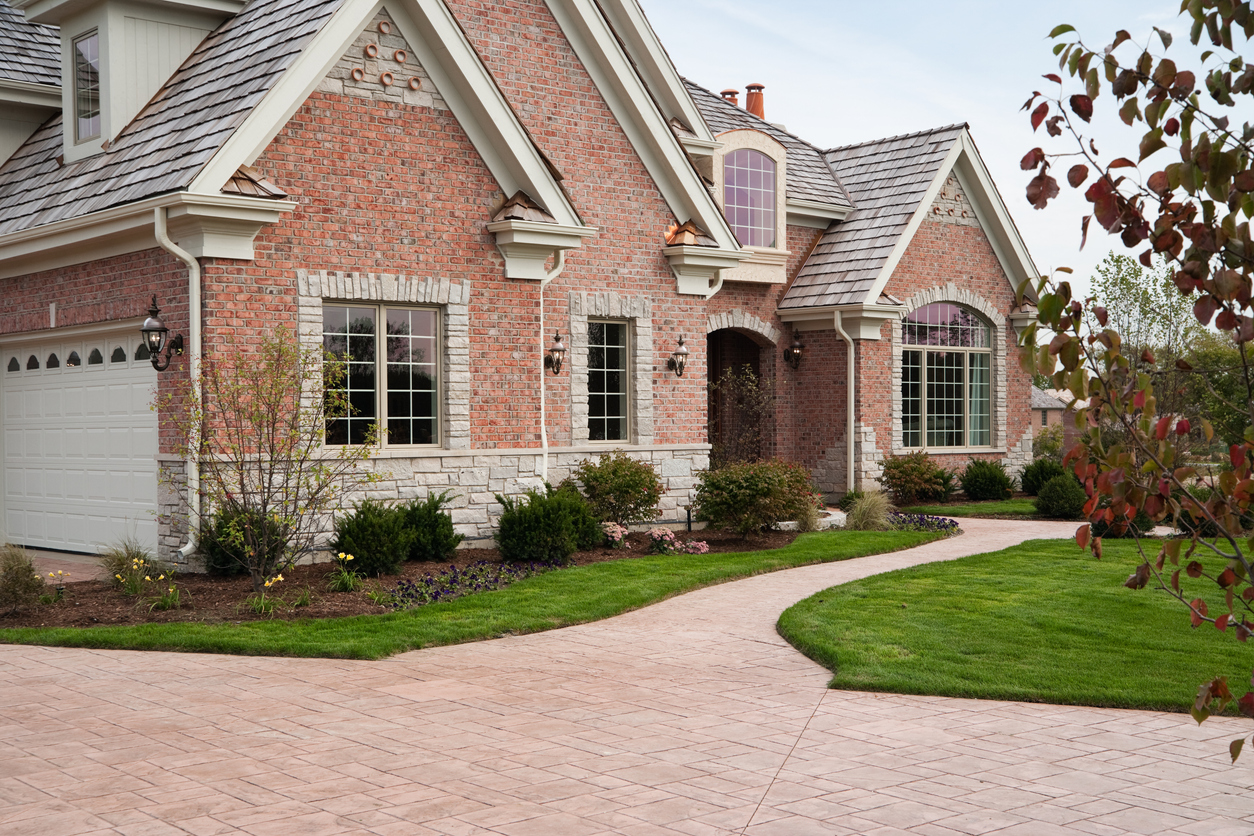
Patios, driveways, pool decks, and other paved surfaces can be made of stamped concrete.
There are several uses for stamped concrete around a property. One popular way to use it is to upgrade the look of an existing patio or to add a new patio to a yard. With the different design options mentioned above, the patio can look as if it were made from slate, pavers, wood, or various other high-end materials. In addition to patios, stamped concrete can also be used for making walkways to a front door, through a backyard garden, or anywhere else one is needed on your property.
A stamped concrete driveway can help add curb appeal to a home. With the variety of pattern and color options available, you’re able to customize the design to match your preferences or mimic the look of higher end driveway materials, such as cobblestones or brick pavers. Some homeowners also choose to lay stamped concrete for their pool deck. Again, it can make it easy to add some visual interest to the space while also protecting the yard from water damage. Just note that stamped concrete may become slippery when wet after the sealant is applied. If you’re looking to use it for a pool deck, Concrete Decor recommends mixing a non-slip additive into the sealant or choosing a more textured pattern for a little extra peace of mind.
Stamped concrete is often cheaper and easier to maintain than the materials it’s designed to mimic.
As shared earlier, stamped concrete patterns make it possible to mimic the look and texture of several higher end patio, driveway, and walkway materials. However, while stamped concrete may look similar to these other materials, it often costs much less to have installed. While the cost to have a stamped concrete patio or driveway installed can vary based on the specific design you choose and your location, you could pay as little as $8 per square foot. More complex designs, those with different sealants, or options using multiple colors may cost about $18 per square foot (or more in some cases). Compare these prices to those of some of the materials the stamped concrete can imitate, and you can see the potential savings. Brick patios, for example, tend to cost about $17 per square foot, while a slate patio could cost up to $40 per square foot.
Maintaining stamped concrete is often easier than maintaining other materials. Regular maintenance includes sweeping debris off of the surface and periodically rinsing dust and dirt away. Concrete pavers, for example, are much more challenging to maintain. The joint sand between the pavers will need to be replaced periodically, which is a rather large undertaking.
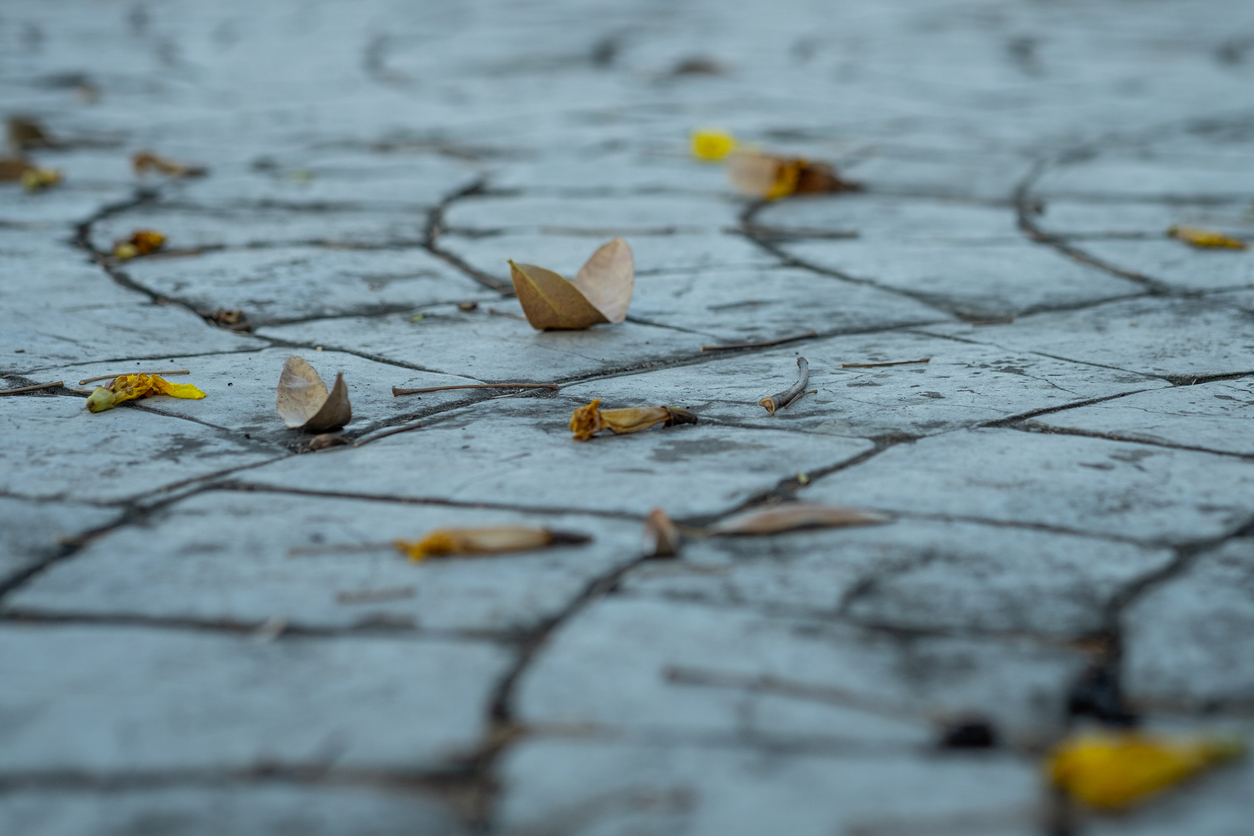
High durability and a long lifespan are two of stamped concrete’s biggest benefits.
Concrete is a very durable material. The steps and materials followed when installing stamp concrete are nearly identical to those followed when installing standard concrete. The main difference is the stamps and mats (and sometimes coloring) that are used to allow stamped concrete to mimic other materials. Because of the similarity between the two materials, the lifespan of stamped concrete can match that of standard concrete, or about 25 years.
RELATED: Before & After: A Drab Concrete Patio Becomes a Chic Outdoor Living Space
Stamped concrete can crack and become discolored over time, and it can be difficult to repair.
You may have heard stories about stamped concrete cracking easily. While this was a more common problem years ago when the technique was newer and still being perfected, it is less of an issue now. Experimentation with different stamping techniques and materials have helped to make sure that the indentations are of a more uniform depth, making cracking less likely. However, if the material does crack or get otherwise damaged, repairing it can be very difficult. Similarly, if the contractor you hire does not install the concrete correctly or use the stamp pattern right, fixing it will not be an easy task.
That being said, stamped concrete can be more likely to crack if it is used to create a surface that will hold a lot of weight. A stamped concrete driveway, for example, will be more likely to crack than a patio made from the material because a car weighs a lot more than a patio set.
To maintain the color of your stamped concrete, it is important to reseal it every few years. If you neglect this important step, it can start to fade or become discolored. If the color does become too faded, it is possible to recolor the concrete, but it will involve removing the existing sealant and working carefully to ensure an even application of the concrete color.
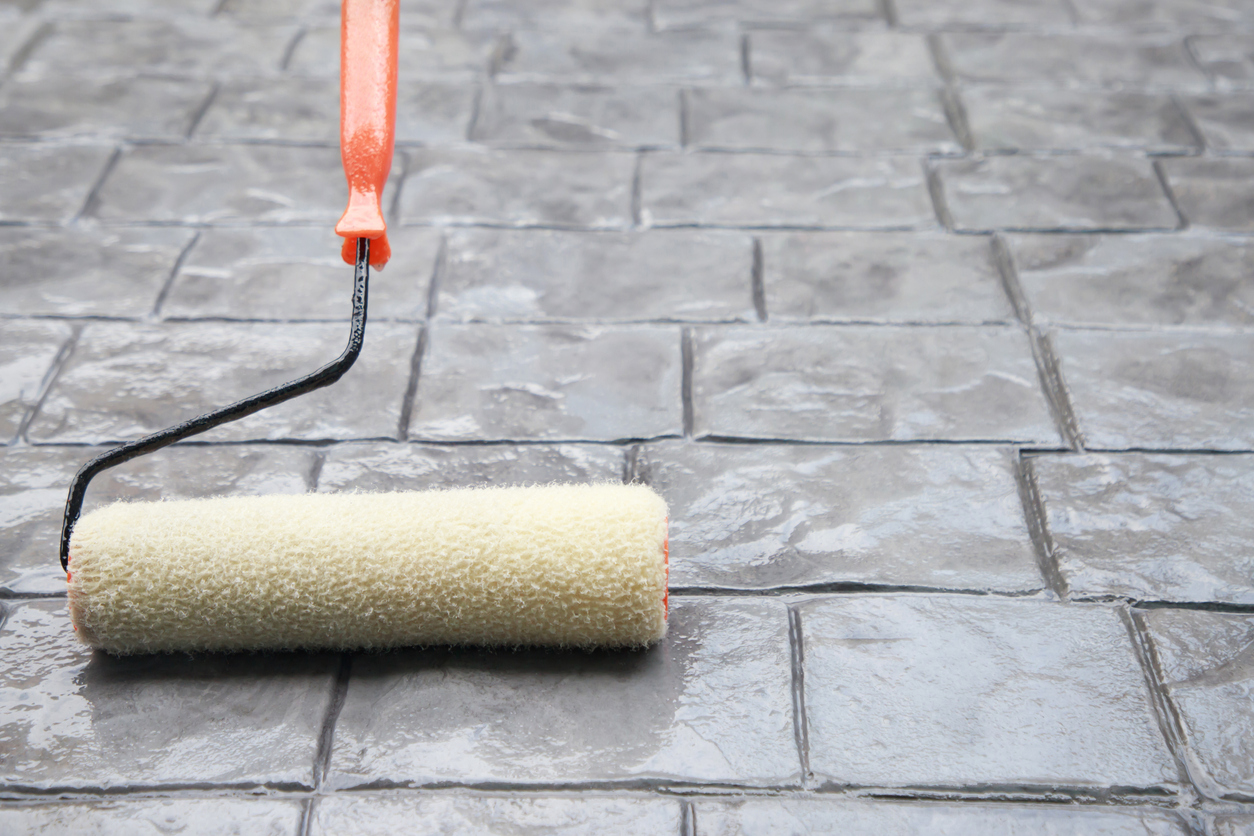
Installing stamped concrete requires advanced skills and specialized tools that DIYers may not have.
In most cases, stamping concrete will not be a DIY project you’ll want to take on. Concrete can be challenging to work with and not easy to alter once it starts to harden. Plus, there are several specialty tools that are needed to complete the task. Taking on this project is not impossible for homeowners to complete, but it may end up being cost-prohibitive once you purchase all the tools you’ll need and a much bigger undertaking than you’re ready for. If you want to hire a professional to install stamped concrete, you should expect to spend between $2,700 and $7,203 for a patio-size space.

